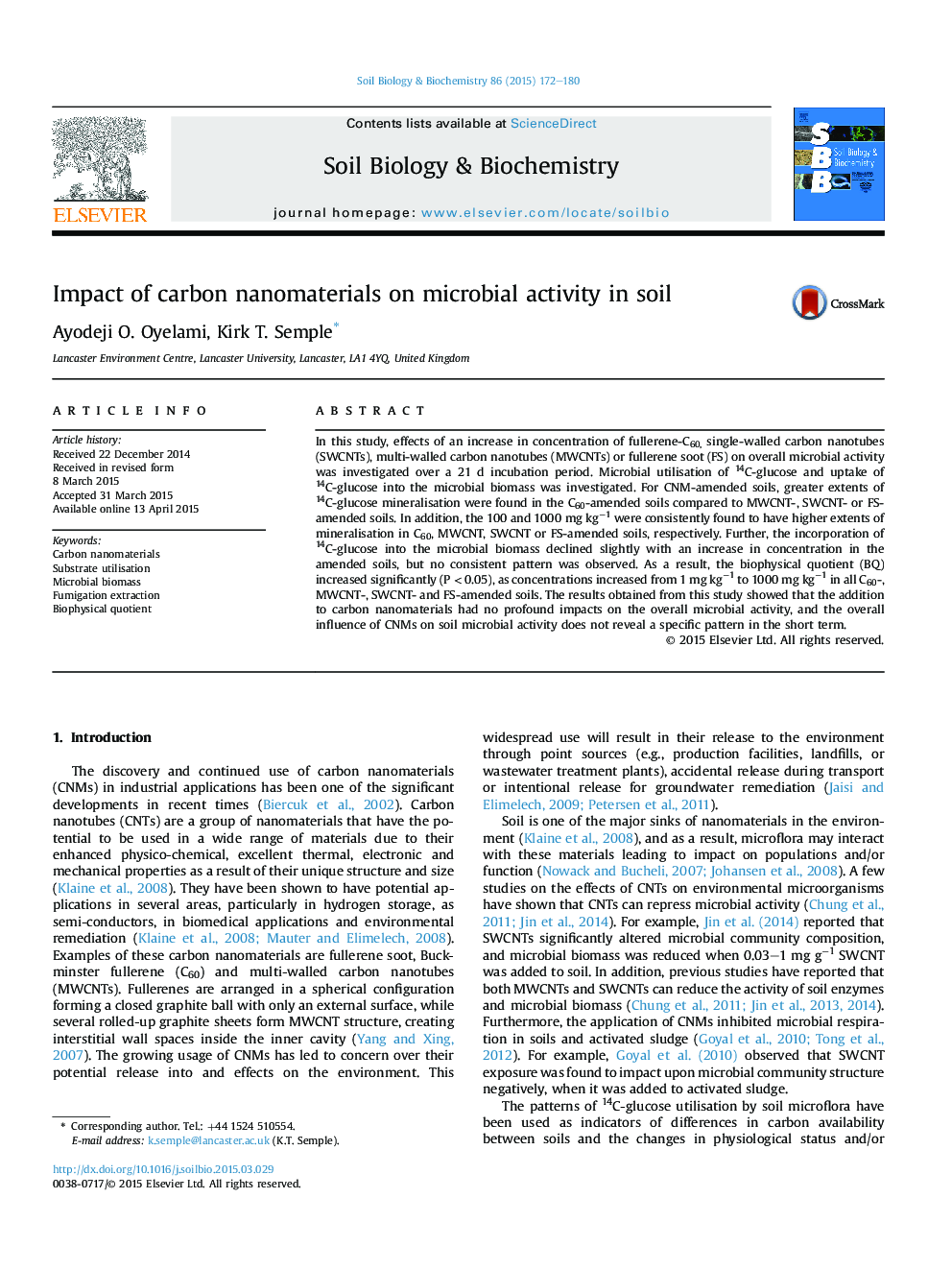| Article ID | Journal | Published Year | Pages | File Type |
|---|---|---|---|---|
| 2024533 | Soil Biology and Biochemistry | 2015 | 9 Pages |
•The maximum rates of 14C-glucose mineralisation increased with an increase in concentration of carbon nanomaterials.•Incorporation of 14C-glucose into the microbial biomass reduced with an increase in concentration of carbon nanomaterials.•Biophysical quotients increased with an increase in concentration of carbon nanomaterials.
In this study, effects of an increase in concentration of fullerene-C60, single-walled carbon nanotubes (SWCNTs), multi-walled carbon nanotubes (MWCNTs) or fullerene soot (FS) on overall microbial activity was investigated over a 21 d incubation period. Microbial utilisation of 14C-glucose and uptake of 14C-glucose into the microbial biomass was investigated. For CNM-amended soils, greater extents of 14C-glucose mineralisation were found in the C60-amended soils compared to MWCNT-, SWCNT- or FS-amended soils. In addition, the 100 and 1000 mg kg−1 were consistently found to have higher extents of mineralisation in C60, MWCNT, SWCNT or FS-amended soils, respectively. Further, the incorporation of 14C-glucose into the microbial biomass declined slightly with an increase in concentration in the amended soils, but no consistent pattern was observed. As a result, the biophysical quotient (BQ) increased significantly (P < 0.05), as concentrations increased from 1 mg kg−1 to 1000 mg kg−1 in all C60-, MWCNT-, SWCNT- and FS-amended soils. The results obtained from this study showed that the addition to carbon nanomaterials had no profound impacts on the overall microbial activity, and the overall influence of CNMs on soil microbial activity does not reveal a specific pattern in the short term.
